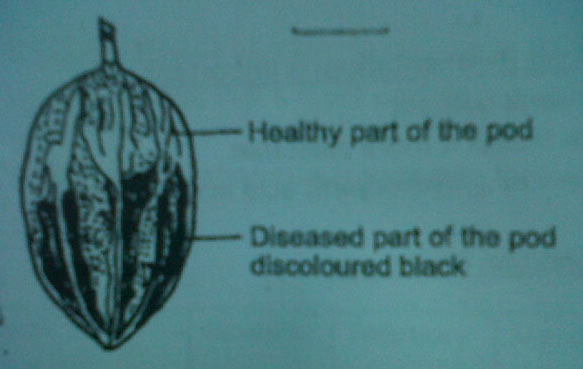Study the schematic diagram below carefully and answer the questions that follow.

Step 1 -
Step 2 -
Step 3 -
Step 4 -
Step 5 -
Step 6 -
Step 7 -
Step 8 -
Step 9 -
Step 10
(i) Name the by-product obtained from the process in step 2. [ 1 mark]
(ii) State the use of the named by-product in small ruminants production. [ 1 mark]
(iii) State
two uses of the by-product obtained from the process in step 5. [ 2 mark]
(iv) Name the process represented by X which takes place in step 6. [ 2 mark]
(v)State
two ways in which the process represented by X is important. [ 2 mark]
(b) A cocoa farmer observed that yields from his cocoa farm were declining. A careful
observation revealed that a large number of the mature pods had large discoloured portions.
Upon breaking a number of pods he also observed that their internal tissues had brown
colouration.
An illustration of an affected cocoa pod is given below.

Study it carefully and answer the questions that follow:
(i) Identify the disease condition on the affected pod. [ 2 marks ]
(ii) Name the possible causal organism of the disease. [ 2 marks ]
(iii) Outline
three measures the farmer can take to control the spread
of the disease in the farm.
[ 2 marks ]



